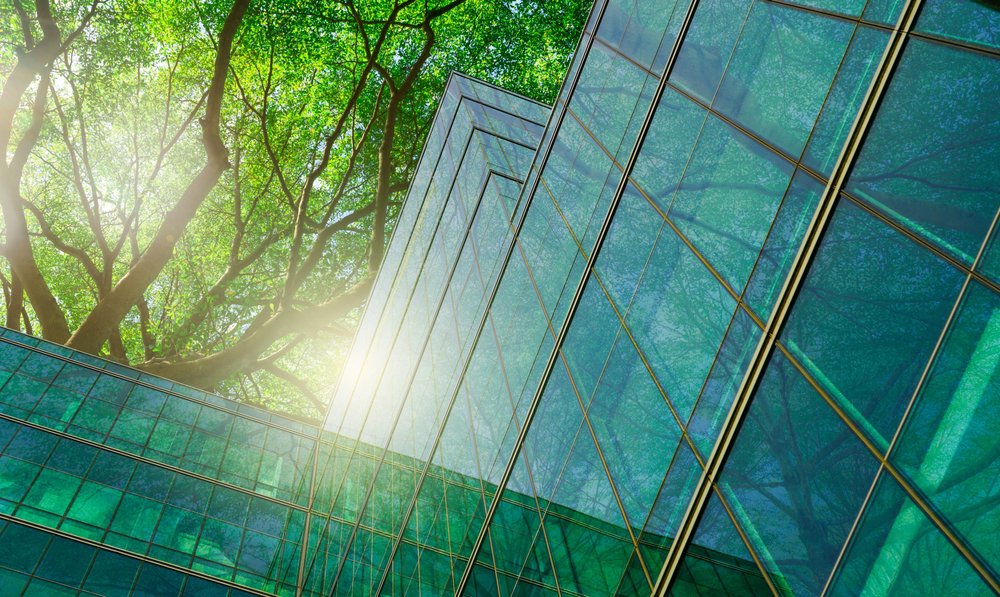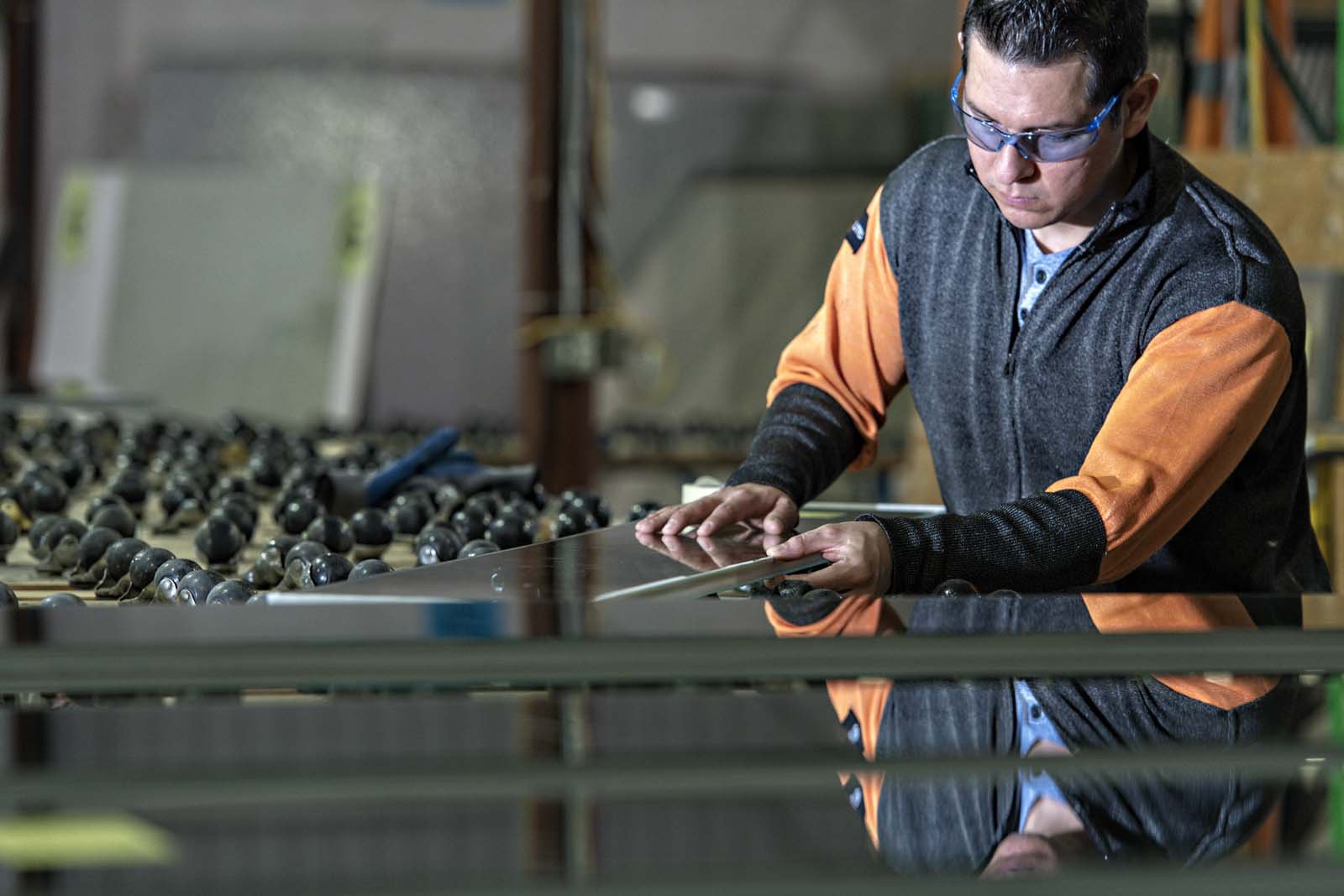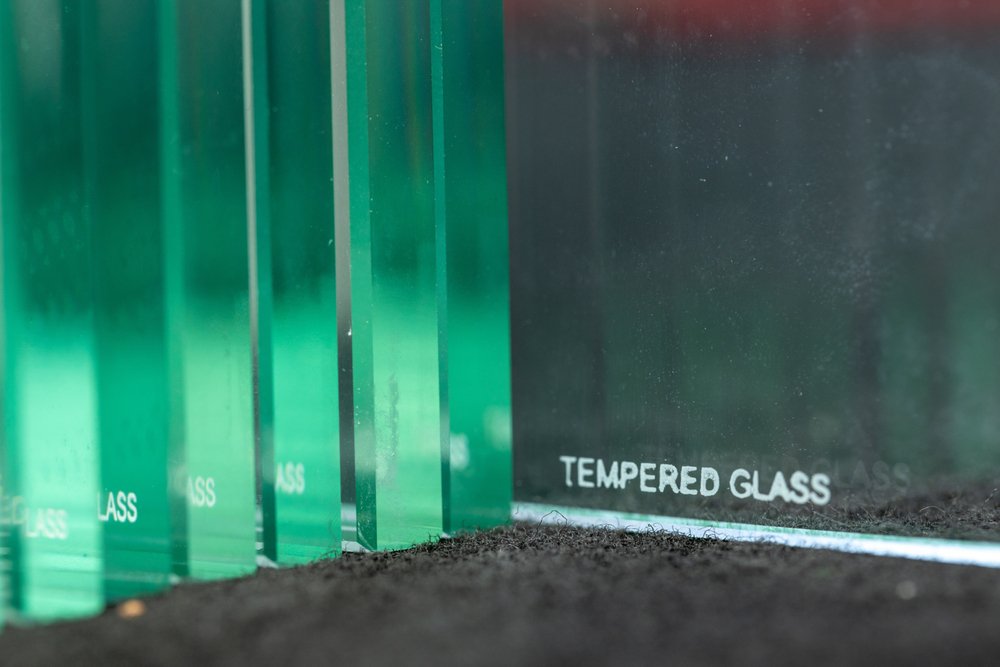Flat glass plays a pivotal role in shaping modern architecture, transforming buildings into symbols of innovation and sustainability. Its use spans a variety of applications, including windows, facades, and interior design elements, making it an essential material in contemporary construction. Thanks to its clarity, durability, and adaptability, flat glass offers unparalleled solutions for both functional and aesthetic architectural needs.
Applications of Flat Glass in Architecture
Flat glass, also known as sheet glass or plate glass, is a type of glass manufactured in flat sheets. Its production involves the float glass process, where molten glass is floated on a bed of molten tin to create perfectly flat surfaces. This process ensures uniform thickness and exceptional clarity, making flat glass ideal for a wide range of architectural applications. Common applications include:
Windows: Enhancing Natural Light and Energy Efficiency
One of the most common uses of flat glass is in windows. Its transparency allows natural light to flood interior spaces, reducing the need for artificial lighting and creating a more inviting environment. Moreover, advancements in flat glass technology, such as Low-E (low-emissivity) coatings, improve energy efficiency by minimizing heat transfer. This not only reduces energy costs but also enhances indoor comfort. Double-glazed flat glass units further enhance insulation, making them an excellent choice for sustainable building designs.
Facades: Blending Aesthetics with Performance
Modern architectural facades often feature flat glass as a primary material. Its sleek appearance and ability to reflect or transmit light contribute to striking visual designs. Additionally, flat glass facades can be customized with coatings, laminations, or tints to optimize thermal performance, privacy, and safety. For instance, laminated flat glass enhances security by holding together even when shattered, while tinted glass reduces glare and solar heat gain. The ability to combine aesthetics with energy efficiency has made flat glass facades a hallmark of contemporary architecture.

Skylights and Roof Glazing
Flat glass is increasingly used in skylights and roof glazing, bringing natural light into spaces that would otherwise rely on artificial illumination. Specialized flat glass, such as solar control glass or tempered glass, ensures safety and energy efficiency in these applications. Skylights made from flat glass can transform interior environments by creating bright, welcoming spaces while reducing electricity usage.
Interior Applications: Functional Elegance
Flat glass is increasingly popular in interior design due to its versatility. It is used in applications such as partitions, balustrades, and decorative panels. Frosted or etched flat glass adds a touch of privacy while maintaining an open and modern feel. Furthermore, mirrors and glass furniture pieces showcase the adaptability of flat glass in creating functional yet elegant interiors. Innovative uses, such as back-painted glass for kitchen backsplashes or tabletops, highlight its decorative potential.
Key Characteristics of Flat Glass
Clarity
The optical clarity of flat glass makes it ideal for applications where transparency is essential. High-quality flat glass ensures unobstructed views and allows maximum natural light to pass through, creating bright and airy spaces. Advances in glass manufacturing processes have minimized imperfections, ensuring that modern flat glass meets stringent optical standards.
Durability
Flat glass is engineered to withstand environmental stresses, including temperature fluctuations, wind loads, and impacts. Tempered or heat-strengthened flat glass offers enhanced strength, making it suitable for demanding architectural applications. This durability ensures that flat glass products maintain their integrity even under challenging conditions, such as high-traffic areas or extreme weather.
Adaptability
Flat glass can be customized to meet specific design and performance requirements. Coatings, tints, and treatments enable architects and builders to achieve desired levels of energy efficiency, safety, and aesthetics. Additionally, flat glass is compatible with various glazing systems, further expanding its range of applications. The adaptability of flat glass ensures that it can cater to both traditional and avant-garde architectural designs.
Sustainable Advantages
The sustainability of flat glass contributes to its growing popularity in modern architecture. It is fully recyclable, making it an eco-friendly choice for construction projects. Energy-efficient flat glass solutions, such as insulated glass units (IGUs), help reduce a building’s carbon footprint by lowering energy consumption. These attributes align with the increasing demand for green building materials in the construction industry. Flat glass also contributes to passive design strategies, enabling architects to harness natural light and reduce dependence on mechanical systems.
Innovations in Flat Glass Technology
The flat glass industry continues to evolve with advancements in technology, offering innovative solutions that meet the demands of modern construction. Smart glass, for example, allows users to control the amount of light and heat entering a space by changing the glass's opacity. This innovation enhances comfort and energy efficiency while providing privacy on demand. Self-cleaning flat glass, another breakthrough, uses a special coating to break down dirt and grime, reducing maintenance requirements.
Anti-reflective glass and acoustic control glass are additional examples of specialized flat glass products designed to address specific architectural challenges. These technologies demonstrate the industry’s commitment to developing high-performance materials that cater to diverse needs.

Why Quality Matters
The performance and longevity of flat glass depend on its quality. High-quality flat glass ensures optimal clarity, durability, and safety, providing long-term value for architectural projects. Substandard glass, on the other hand, may lead to issues such as discoloration, distortion, or reduced structural integrity. Partnering with a trusted provider is essential to ensure reliable and high-performing flat glass solutions. Quality glass not only meets but often exceeds regulatory standards, offering peace of mind to builders and end-users alike.
Choosing the Right Flat Glass Provider
Selecting the right flat glass provider is crucial to the success of any construction project. A reputable supplier offers a wide range of products tailored to meet the unique requirements of different applications. In addition to product quality, factors such as customer support, customization options, and timely delivery should be considered. Partnering with a provider that prioritizes innovation and sustainability ensures access to cutting-edge solutions that enhance project outcomes.
Elevate Your Projects with Premium Flat Glass Solutions
Flat glass is not just a building material, but a cornerstone of modern architectural innovation. Its clarity, durability, and versatility make it indispensable for windows, facades, skylights, and interior applications. When you choose high-quality flat glass, you’re investing in performance, aesthetics, and sustainability.
At Insul-Lite, we specialize in providing top-tier flat glass solutions for residential, commercial, and industrial projects. Our products are designed to meet the highest standards of quality and performance, ensuring your projects achieve their full potential. Connect with us to learn how we can support your next architectural endeavor.





